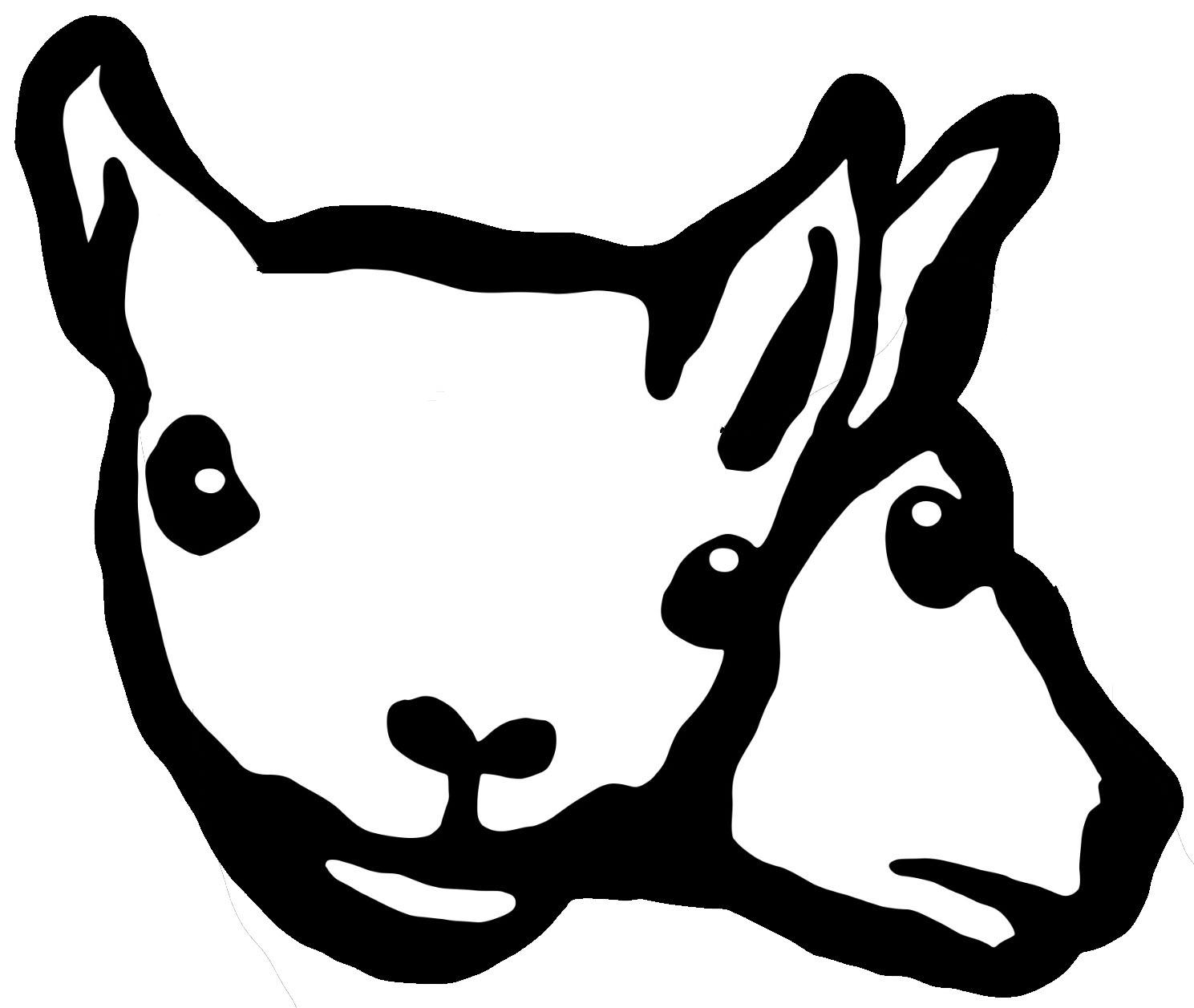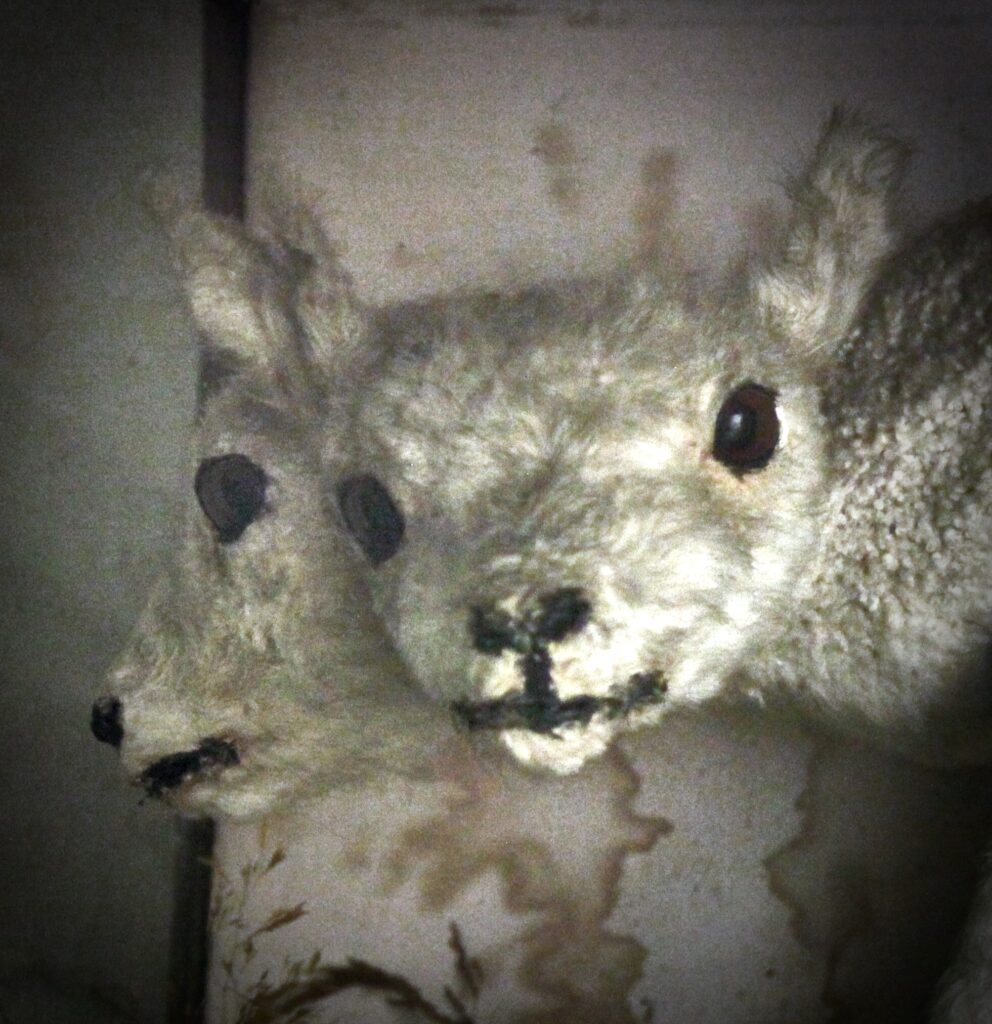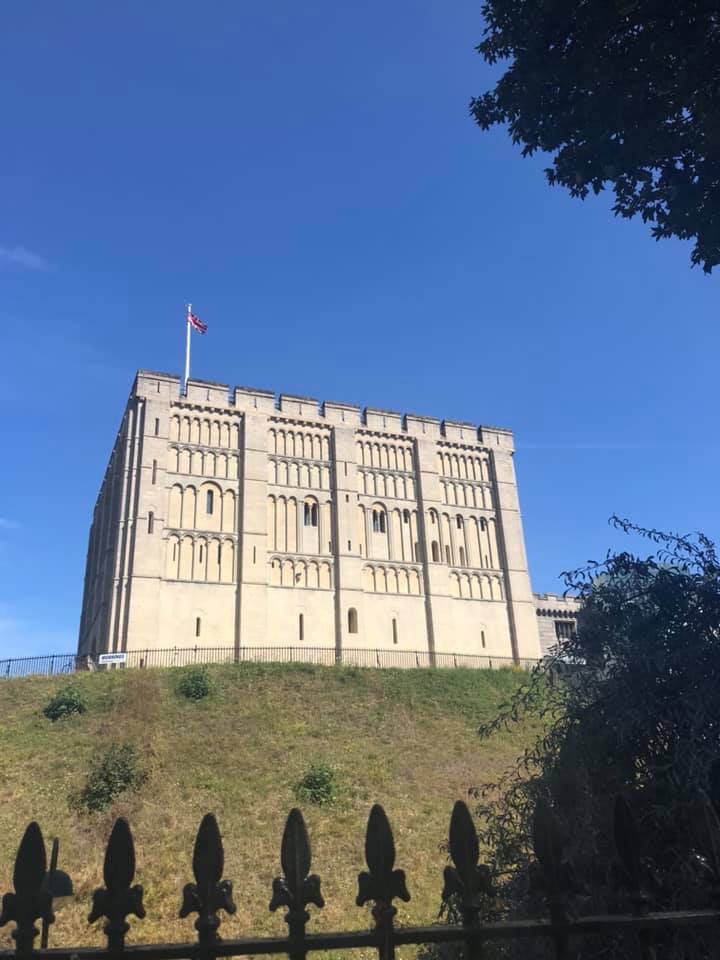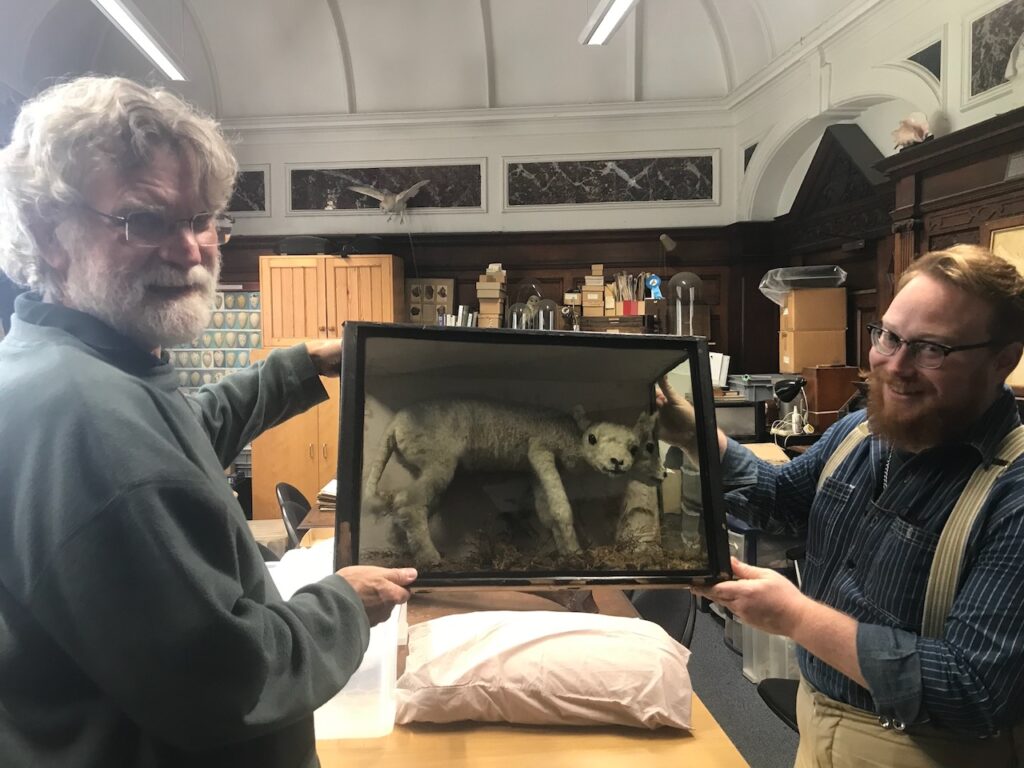

Many in Billericay have grown up having seen Billericay’s famous “Two Headed Lamb” whilst at school and it’s one of our most popular exhibits. Over 120 years old, in 2019 it was sent away to undergo conservation work in Norwich.
Experts at the Norwich Castle Museum have returned it to its former glory and is now prominently displayed in a high quality case that was purchased through a grant from Essex County Council. We are grateful to County Councillor Dr. Richard Moore for his support in having our grant request accepted.
The Museum closed at the start of the Covid lockdown and rather than re-open once the situation permitted we focused on internal works in the Museum – redecorating, upgrading and reorganising – so it is only now in late 2023 that you will get your first opportunity to see our prized lamb, nice and clean and in its very smart new case.
The image shows the heads of the lamb in 2019, shortly before being removed for conservation.
The History of the Two -Headed Lamb
The lamb was born on a farm in the Billericay area, dying at the age of 6 weeks. Maintaining two heads probably put a stress on the lamb’s heart and this may have been the cause of its premature death. It was given to the Cater Museum as a bequest following the death of a Miss Shipp. Her father, Timothy Shipp, was the Veterinary Surgeon of Billericay and he owned the lamb before passing it on to his daughter. Other items belonging to the Shipp family – including veterinary tools – can be seen below the lamb.
The Conservation Process
In October 2019 it was carefully packed and transported to the Norwich Castle Museum by Tanya Burrage, the Cater Museum’s Project Manager for the lamb’s restoration.
There it was handed over to two experts, Senior Natural History Curator David Waterhouse and retired Senior Natural History Curator Tony Irwin.
A preliminary investigation (from outside of the lamb’s case) found some evidence of Anthrenus, or carpet beetle. This is a common problem in museums and attacks amongst other things wool! You can read more about carpet beetles on the Natural History Museum’s website. However, the good news was that overall the condition looked good and there was little obvious damage.
Based on visual checks they recommended that the lamb was removed from the case; the case cleaned inside and out and tests done on the lamb’s fleece to work out the extent to which it could safely be cleaned. The ground display on which the lamb stands would then cleaned and finally the case repainted.
The first stage was to put the lamb in a conservation freezer. Many museum objects are prone to insect attack and one of the safest ways to halt damage is to freeze at -30 degrees for about 72 hours to kill all stages of the lifecycle of any pests – from egg through to larvae and adult insect. At least it’s got a woollen coat on !!


However, rather than a short 72-hour stint in the freezer David and Tony decided that it should stay there for 2 weeks to be sure that all bugs or larvae have been dealt with in this first stage. Brrrrrr !!!
Following this a full “condition report” was conducted by a specialist in the Norfolk Museums Service to know exactly what restoration work needed to be done. We then got the work costed by the expert Natural History Conservators and the restoration underway.
The Return of the Lamb
For all of us, the upheavals of 2020 put paid to many activities and the same was true with the lamb. However, it was returned in 2021 all nice and safely wrapped up and it was exciting to open the packaging to reveal the transformation.
No photographs here – you’ll be able to see our newly restored lamb in its new home when you visit!
Please support your Museum
The Cater Museum is a charity and receives no external funding. If you would like to help support the Cater Museum with projects such as these please do consider becoming a Friend of the Cater Museum (you can join for just £10) – and you’ll also receive our regular newsletter and invites to special events). Full details can be found here : catermuseum.co.uk/fotcm